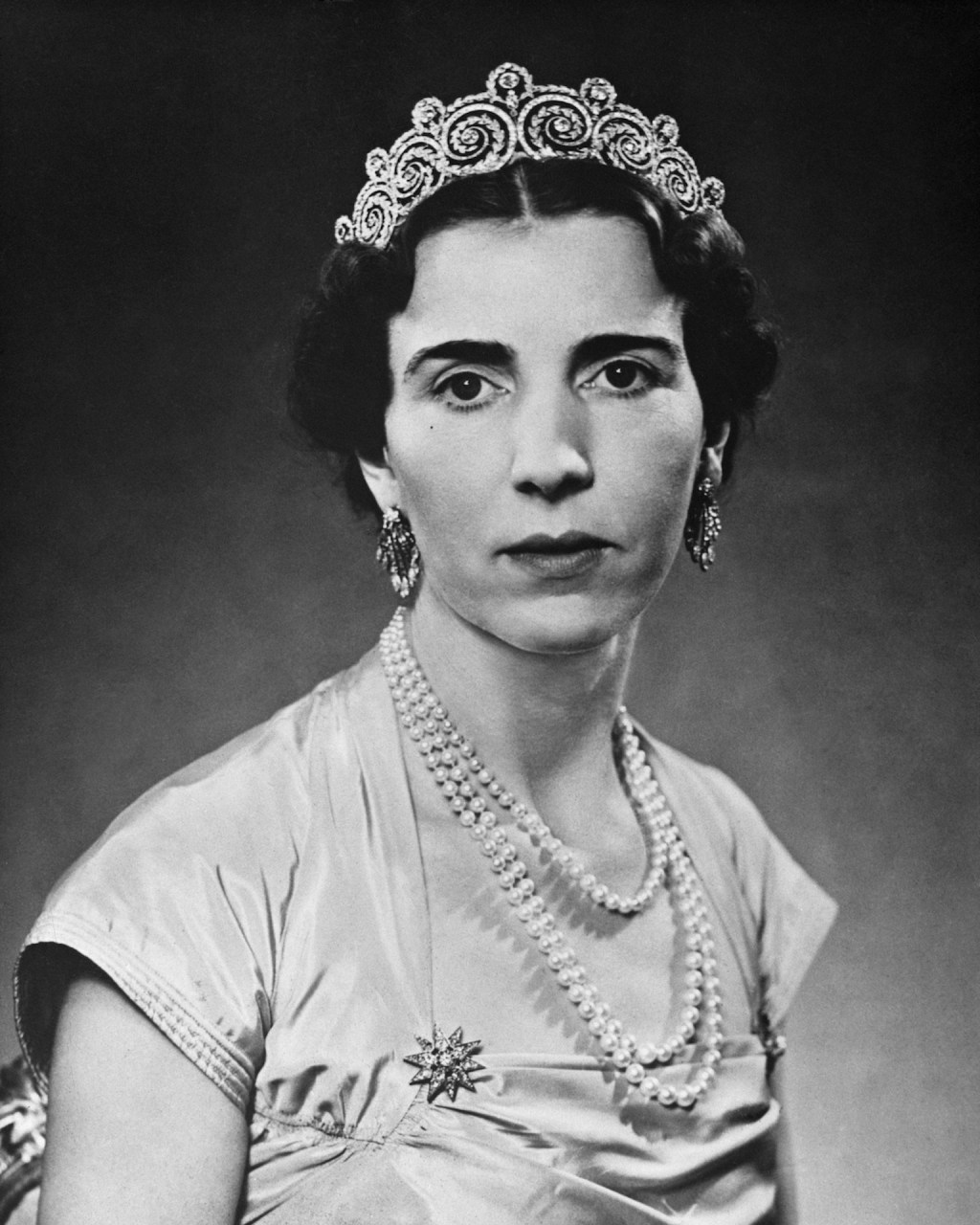Feeling “Fancy?” Get to Know the True Colors of These Historic Diamonds
The Farnese Blue, Dresden Green, and Golden Jubilee each have an epic story of their own.
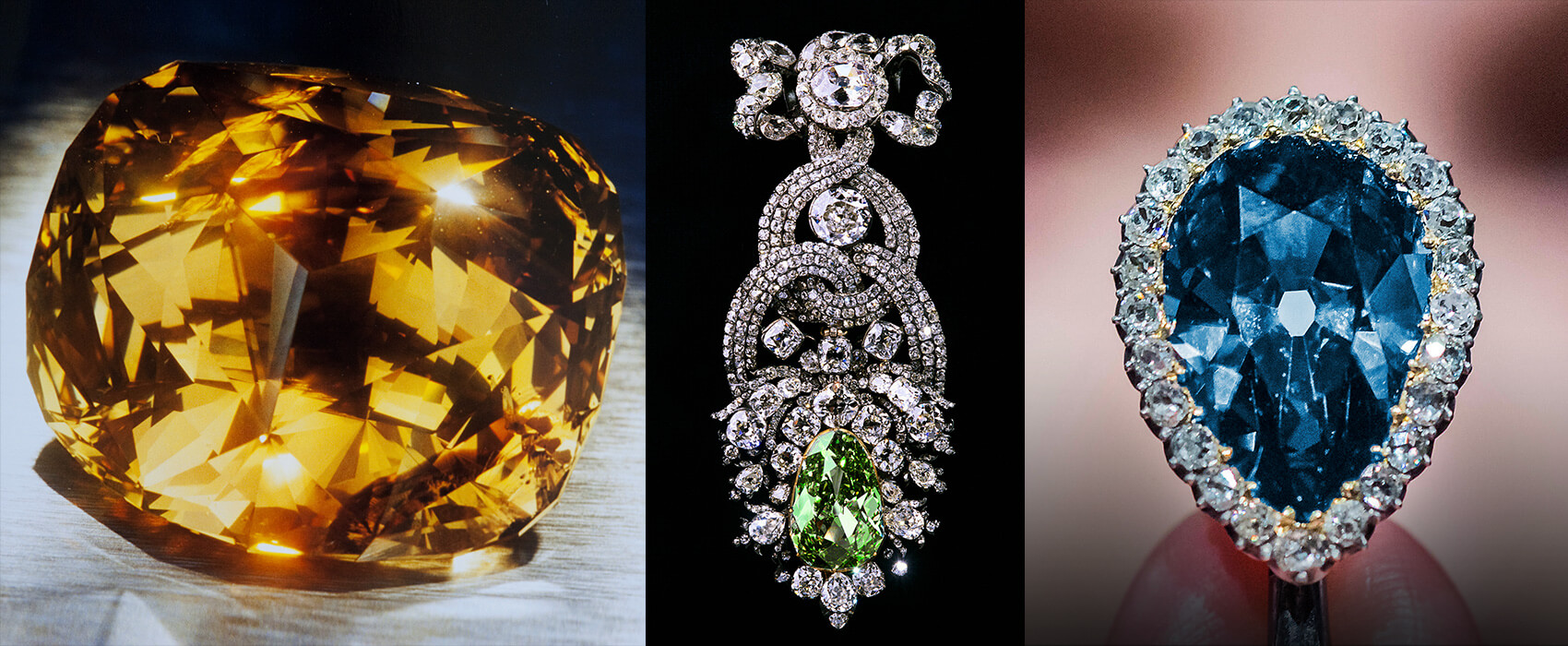
The most coveted of all precious jewels–since the beginning of time–has been Natural “Fancy” Colored Diamonds. These prismatic stones date back well over 3,000 years. In India, the different castes were allowed to wear colored diamonds, and only royalty was allowed to wear white diamonds. In Europe, they were traded to start marriages, prevent wars, and change the boundaries of countries. Having always been prized throughout history, today, auction houses break records each time these stones come out of their modern-day vaults, however, many are still kept private or within the family, as seen most recently with Princess Beatrice’s 100-year old Diamond Wedding Tiara.
1. The Farnese Blue
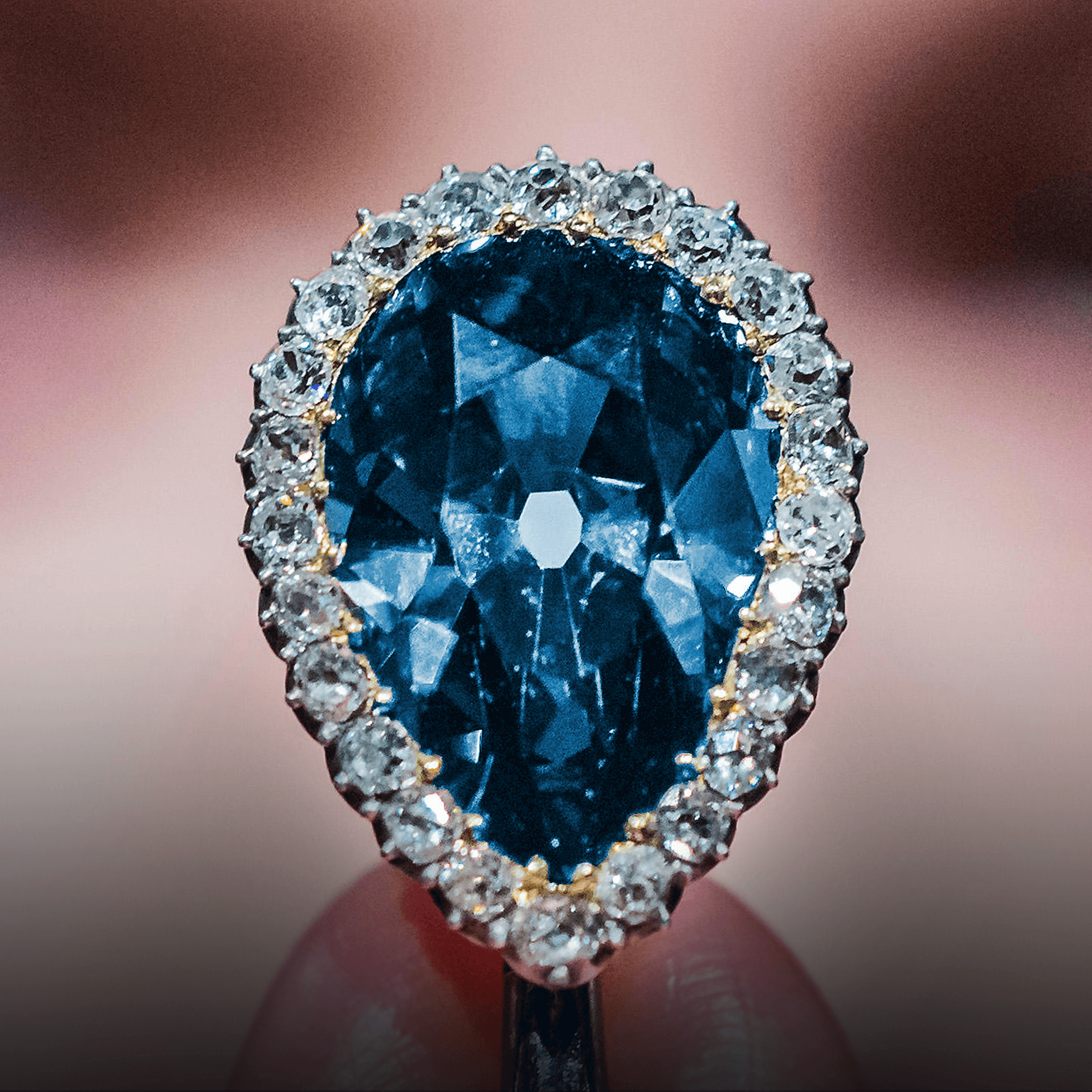
When Spanish King Philip V needed a dowry for his future wife (Italian Princess, Elizabeth Farnese of Parma), the entire empire came together to send wedding gifts for the occasion. The then Governor of the Philippines sent the Golconda-sourced stone to Cuba as his offering. In 1715, twelve ships filled with opulent treasures set sail for Spain, but a hurricane off the coast of Florida sunk most of the fleet. As fate would have it, the lone ship carrying the violetish-blue diamond was the only one to dock in the port of Seville. Once it was gifted to Queen Elisabeth Farnese, the jewel stayed in Royal lineage for over 300 years, passing through Spain, France, Italy, and Austria. The stone was held by nine different European Royals, including in the tiara of Queen Marie Antoinette. In 2018, the last family to own the Diamond sold it through Sotheby’s Magnificent & Noble Jewels auction in Geneva. The antique pear shaped diamond weighed 6.16 carats and was expected to fetch anywhere between $3.7-5.2 million USD. It ended up selling to an anonymous online bidder in under 4 minutes for well over the estimates at $6.7 million USD. The over 6 carat diamond could have easily disappeared into a private collection, never to be seen again. But then, last year, the Italian jeweler BVLGARI included The Farnese Blue in its 2019 “Cinemagia High Jewelry Collection.” Now weighing 6.03 carats (after a slight, but masterful re-cut) the stone is currently loose and awaiting a newly designed setting for its next chapter.
2. The Dresden Green
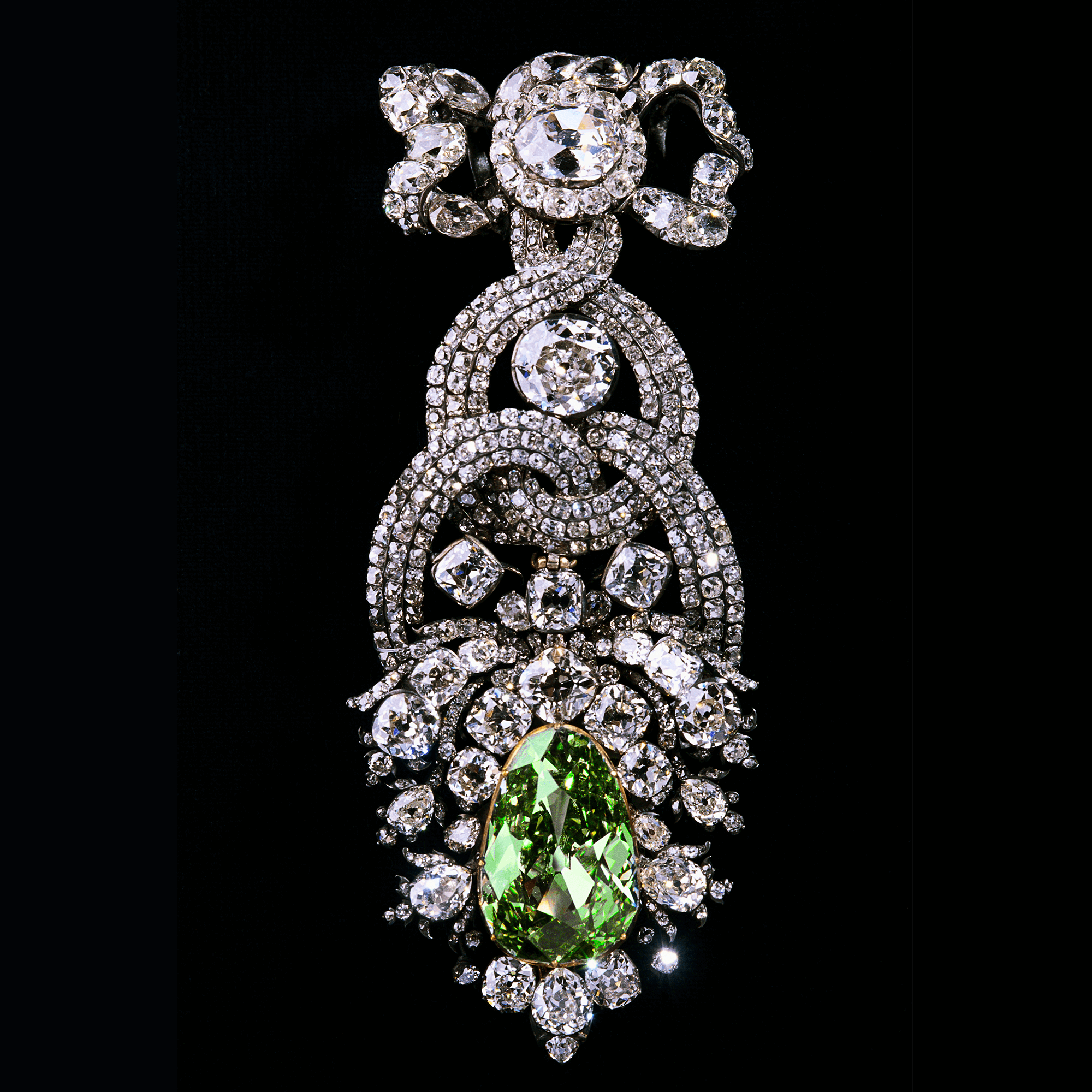
Weighing in at 40.70 carats, the Dresden Green Diamond is the largest and most famous green diamond in history. Historical experts have speculated that this exceptional stone hails from the Kollur mine in the famous Golconda region of India. Diamonds from this region are often a very special and rare type, known for their transparency and purity. Scientists believe that it owes its unique “apple green” hue to natural radiation exposure. A closely guarded historical treasure, it has only been examined once in 1988 during a museum renovation by an American and a Swiss gem lab. The first documented mention of the very large diamond was in a London newspaper dated 1722. At the 1742 Leipzig Fair, the unique colored diamond was acquired by a Polish-Saxon King from a Dutch merchant for £30,000 (around £6.5 million today). Sometime later around the year 1768, it was set into the bejeweled hat ornament that the green jewel was to rest into this very day. Over the years the green diamond was housed in a special set of rooms in the Dresden Palace known as the Green Vault. Since then it has only left there twice: for a decade after WWII in the Soviet Union, and for a recent exhibition at the MET Museum in New York City.
3. The Golden Jubilee
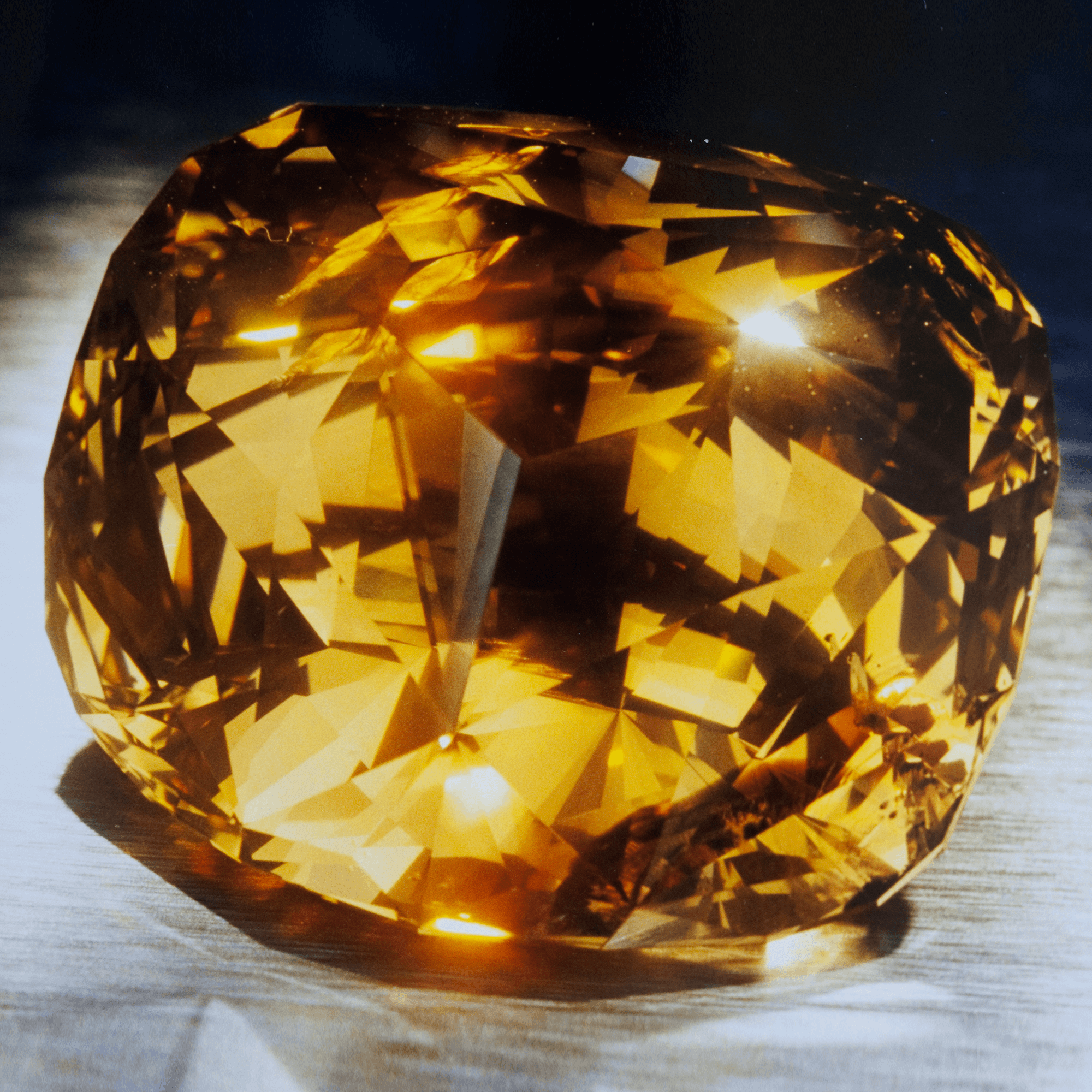
At 545.67 carats, The Golden Jubilee Diamond is the largest faceted diamond in the world. Discovered in 1985 at the prolific Premier Mine in South Africa, it was unearthed as a piece of rough originally weighing 755.5 carats. The now revered jewel was originally given the common title of “unnamed brown.” For the next five years, it remained untouched as it was felt that the characteristics of the stone were too difficult to get around. Then in 1990 De Beers hired famed cutter Diamantaire Gabi Tolkowsky, to evaluate the rough Diamond with new technology it had developed. After two whole years of work and building an underground room free of vibration; the jewel emerged as what’s been described as a “Fire-Rose Cushion Cut.” Then, in 1995, the stone was acquired by a group of Thai businessmen. It was flown around the world to receive blessings by various religious leaders (including John Paul II). In the year 2000, it was presented to the King of Thailand on the 50th anniversary of his ascent to the throne as a gift, where it now resides in the Thai Royal Jewels. Although in photos, the Golden Jubilee may appear Orange, its official color grade declares it a yellowish-brown diamond. The diamond was once given a value of nearly $12 million USD, although experts agree that it would fetch significantly more at an auction today.
